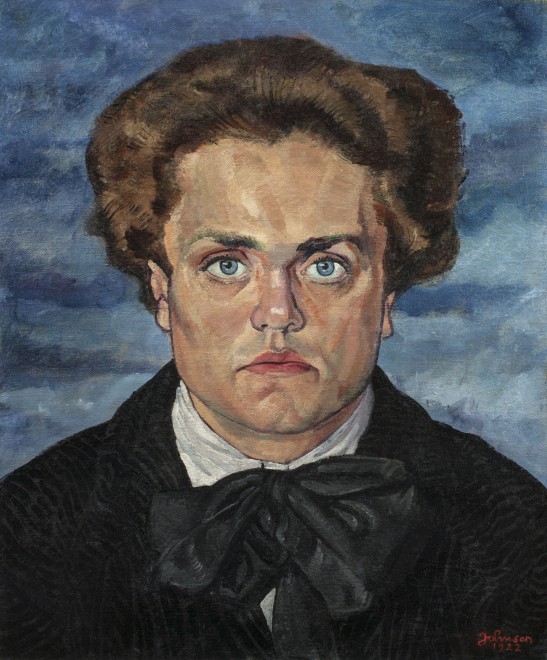Provenance
Private collection, France
Exhibitions
Paris, Salon d’Automne, 1924, no. 933
Robert Ward Johnson was born in San Francisco. He received his early artistic
training at the Art Students League in New York under George Bridgman, a
classically trained instructor who emphasized drawing. Johnson studied at the
Munich Akademie and participated in World War I. After the war, he traveled to
Paris where from 1919-1928 he exhibited landscapes and figural painting
regularly at the Salon d’Automne. In the 1930s Johnson illustrated a posthumous
edition of Samuel Butler’s, The Way of All Flesh , which was edited by Theodore
Dreisser. At the end of his career, the artist returned to the Art Students League
as an instructor.
During the 1920s Johnson lived at 194 Avenue Michel Bizot in the 12th
arrondissement, but spent much of his time in the more artistically stimulating
Montparnasse, associating with avant-garde artists such as Man Ray, Moise
Kisling, and Tsuguharu Foujita. In Montparnasse he met the dwarf Jean-Paul Le
Tarare (1899-1982) a noted actor, film director and writer. Le Tarare was the
first “little person” to achieve prominence as a dramatic actor and appeared in
some of the earliest silent movies produced in Montparnasse, including La Lys
de la vie (1920) with Loie Fuller, L’odyssée d’un film (1923) and La terre du
Diable (1922). In the 1924 film La Galerie des Monstres his co-stars included
Lois Moran, the actress who was the inspiration for the character of Rosemary
Hoyt in F. Scott Fitzgerald’s Tender is the Night, and Kiki (Alice Ernestine Prin)
- the “Queen of Montparnasse.” Kiki drew a portrait of Le Tarare in 1925 (fig.1).
Painted in 1922 during the height of Le Tarare’s film career, Johnson’s rendition
of the actor is a straightforward bust-length portrait. The focus is on the sitter’s
visage so there is no indication of his diminutive stature. Dressed in a somber
black coat and tie, Le Tarare directly engages the viewer, his sober visage and
pale blue eyes are framed by a full shock of wavy auburn hair. Much like Le
Tarare who, in his film career wished to be taken seriously as an actor rather
than as a sideshow entertainer, Johnson, in this portrait, by concentrating on the
sitters face, attempts to convey that depth of character. At once painterly in the
execution of the bushy head of hair, floppy tie and the facial tonalities, the work
also relies on strong line to define the nose, ears and chin. In many ways, the
bust-length, intense gaze, and crisp outline of the figure recall the haunting
portraits of Ferdinand Hodler (fig.2).
